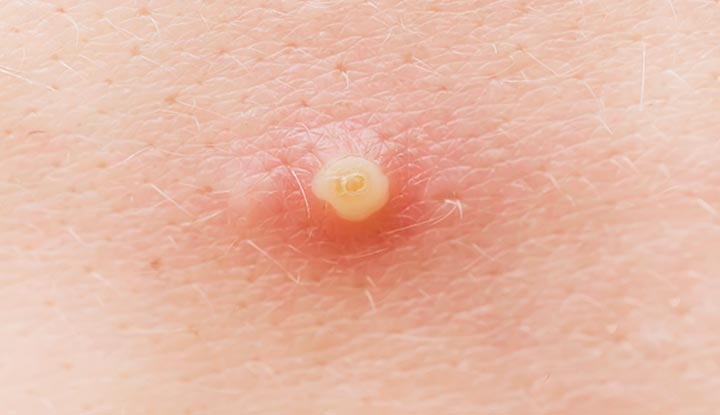 Zapier Automation – Automate Publishing. Free Your Time!
Zapier Automation – Automate Publishing. Free Your Time!
Lipoma Treatment Insights: Expert Advice You Need
Written by bisma » Updated on: June 17th, 2025

Lipomas are benign tumors consisting of fat cells that can appear anywhere on the body. Though they are generally harmless, they can cause discomfort or cosmetic concerns, leading many to seek treatment. To navigate the best options and ensure effective management, here are expert insights into Lipoma Treatment in Dubai that can guide your decisions.
1. Understanding Lipomas
What They Are: Lipomas are soft, movable lumps under the skin that are usually benign and asymptomatic. They are composed of fatty tissue and can vary in size. Most lipomas are not dangerous, but their presence can sometimes be bothersome.
Symptoms and Diagnosis: Lipomas are typically painless, though they can occasionally cause discomfort if they press on nerves or are located in a sensitive area. A healthcare provider diagnoses a lipoma through physical examination and may use imaging techniques like ultrasound or MRI if the lipoma is deep or complex.
2. Treatment Options
Surgical Excision
What It Involves: Surgical excision is the most common and definitive treatment for lipomas. It involves making an incision to remove the lipoma and surrounding tissue to ensure complete removal.
Why It’s Effective: This method effectively eliminates the lipoma and reduces the risk of recurrence. It is suitable for both small and large lipomas, especially those causing symptoms or cosmetic concerns.
Post-Treatment Considerations: Post-surgery, patients might experience swelling, bruising, or discomfort. Follow-up care involves monitoring the surgical site for proper healing and managing any complications such as infection or wound dehiscence.
Liposuction
What It Involves: Liposuction is a minimally invasive procedure where a thin tube is inserted to suction out the fatty tissue of the lipoma.
Why It’s Effective: It is less invasive compared to traditional surgery and is useful for removing fatty content with minimal scarring. It is often used for larger lipomas or those in challenging locations.
Post-Treatment Considerations: Liposuction may not remove the entire capsule of the lipoma, which can lead to recurrence. Post-treatment involves managing bruising and swelling and monitoring the treated area for any residual lump.
Steroid Injections
What It Involves: Corticosteroid injections are used to shrink the lipoma by reducing inflammation and fatty tissue.
Why It’s Effective: Steroid injections can reduce the size of the lipoma and alleviate associated symptoms, making it a viable option for cases where surgery is not immediately needed.
Post-Treatment Considerations: Multiple injections may be required, and the effectiveness varies. This method might not completely remove the lipoma and is generally used as an adjunct to other treatments.
Cryotherapy
What It Involves: Cryotherapy involves freezing the lipoma with liquid nitrogen to destroy the fatty tissue.
Why It’s Effective: This method is minimally invasive and can be effective for smaller lipomas. It is generally used when other treatments are not suitable.
Post-Treatment Considerations: Cryotherapy may require multiple sessions and can cause skin irritation. The method may not be effective for large or deeply located lipomas.
3. Choosing the Right Specialist
Qualifications and Expertise:
Dermatologists: Often the first point of contact for lipoma diagnosis, dermatologists can perform minor surgical procedures and manage treatment for many lipomas.
General Surgeons: Suitable for larger or more complex lipomas, general surgeons can perform extensive excision procedures and manage post-operative care.
Plastic Surgeons: Ideal for lipomas in cosmetically sensitive areas, plastic surgeons can ensure optimal cosmetic outcomes and minimal scarring.
Consultation Process:
Initial Assessment: The specialist will evaluate the lipoma, discuss symptoms, and determine the most appropriate treatment plan based on the lipoma’s size, location, and characteristics.
Treatment Discussion: Review all available options, including their benefits, risks, and expected outcomes. The specialist should provide clear explanations and answer any questions you may have.
4. Preparing for Treatment
Pre-Treatment Instructions:
Preparation: Follow any pre-treatment instructions provided by your healthcare provider, such as avoiding certain medications or fasting if required.
Support: Arrange for help with transportation and post-treatment care if necessary, especially if the procedure involves sedation or anesthesia.
Managing Expectations:
Outcomes: Understand that treatment results may vary based on the method used and the individual’s response. Discuss potential outcomes and risks with your specialist to set realistic expectations.
5. Post-Treatment Care
Wound Management:
Care: Keep the treatment area clean and follow wound care instructions to prevent infection. Monitor for any signs of complications, such as increased redness, swelling, or unusual discharge.
Pain Management: Use prescribed pain medications or over-the-counter options as directed to manage discomfort and follow any recommendations for reducing swelling.
Follow-Up Appointments:
Monitoring: Attend all scheduled follow-up appointments to monitor the healing process and ensure that the lipoma has been effectively treated.
Further Treatment: Discuss any further treatment needs or adjustments based on the progress and results observed during follow-up visits.
6. Lifestyle Considerations
Health Maintenance:
Diet and Exercise: Maintaining a balanced diet and regular exercise can support overall health and may influence fatty tissue development. While lifestyle changes alone cannot treat lipomas, they contribute to general well-being.
Avoiding Risk Factors: While there are no specific risk factors for lipomas, adopting a healthy lifestyle can support overall skin and body health.
Conclusion
Effective lipoma treatment involves choosing the right method based on the lipoma’s size, location, and the patient’s specific needs. Surgical excision, liposuction, steroid injections, and cryotherapy are all viable options, each with its own benefits and considerations. Selecting a qualified specialist, preparing adequately for the procedure, and following post-treatment care instructions are crucial for achieving optimal results. By understanding these insights and working closely with your healthcare provider, you can manage your lipoma effectively and ensure a positive treatment outcome.
Note: IndiBlogHub features both user-submitted and editorial content. We do not verify third-party contributions. Read our Disclaimer and Privacy Policyfor details.
Copyright © 2019-2025 IndiBlogHub.com. All rights reserved. Hosted on DigitalOcean for fast, reliable performance.














